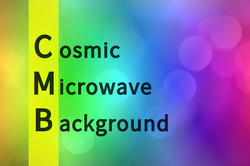The early universe in focus
CMB is a unique source of information about the universe's past. The spectrum of this legacy of light emitted about 380 000 years after the Big Bang points to a rather boring universe, as there are no hints of light degrees of freedom beyond the standard model or of larger-than-expected neutrino masses. However, the Planck observations have narrowed down the parameter space of 'inflation' – an accelerated expansion that the universe experienced when it was only a tiny fraction of a second old. Also, scientists are now closer than ever to selecting a small class out of the many inflationary models proposed. Scientists working on the EU-funded project NGSKY (Non-Gaussianity in the sky) focused on the first model of inflation proposed by Alexei Starobinsky in the 1980s. This theoretical model based on a conformal anomaly in quantum gravity is favoured by the first-year Planck observations. The Starobinsky model is equivalent to a theory of standard gravitation coupled to a propagating real scalar degree of freedom, suitable to drive inflation. The scientists have embedded this higher curvature gravitational model in the fundamental theory of supergravity. Supergravity, as the low energy limit of superstring theory, offered the proper set-up to accommodate cosmic inflation. The scientists used the linearised theory since it was sufficient for the analysis of the field spectrum. Their findings suggest that auxiliary fields of the Einstein theory give rise to additional degrees of freedom. However, there are also the so-called Higgs inflation models that are in agreement with the Planck observations. These give the same predictions as the Starobinsky model. In NGSKY, the scientists demonstrated that there is a simple reason for this coincidence. Apparently, all these different models are in essence the Starobinsky model during inflation. This line of research led to establishing the consistency relations for the large-scale structure of the universe as a result of the corresponding consistency relations for inflation. These relations are nothing else than signatures of underlying symmetries relevant to the cosmological settings. Using symmetries of cosmological magnetohydrodynamics, the scientists provided valuable insights into the interplay among the universe's large structure, the magnetic fields observed and their origin. Symmetries were adopted to learn more about the connections among magnetic field, dark matter and baryons. The many important findings of NGSKY have been disseminated to the scientific community through several publications in high-impact peer-reviewed journals. The NGSKY project's results lay the groundwork for new connections to be established between the physics of fundamental particles and cosmology, the physics of the very large structures in the universe.
Keywords
Early universe, Planck mission, cosmic microwave background, NGSKY, cosmology



